
Graphium antiphates, the five-bar swordtail, is a species of papilionid butterfly found in south and southeast Asia. The species was first described by Pieter Cramer in 1775.

Graphium agamemnon, the tailed jay, is a predominantly green and black tropical butterfly that belongs to the swallowtail family. The butterfly is also called the green-spotted triangle, tailed green jay, or green triangle. It is a common, non-threatened species native to Nepal, India, Sri Lanka through Southeast Asia and Australia. Several geographic races are recognized. The species was first described by Carl Linnaeus in his 1758 10th edition of Systema Naturae.

Graphium sarpedon, the common bluebottle or blue triangle in Australia, is a species of swallowtail butterfly that is found in South and Southeast Asia, as well as eastern Australia. There are approximately sixteen subspecies with differing geographical distributions.

Cepora nerissa, the common gull, is a small to medium-sized butterfly of the family Pieridae, that is, the yellows and whites, which is native to Sri Lanka, India, China, southeast Asia, and Indonesia.
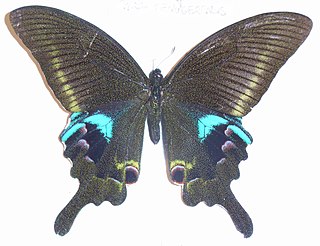
Papilio arcturus, the blue peacock, is a species of swallowtail butterfly found in the Indian subcontinent.

Meandrusa sciron, the brown gorgon, is a species of swallowtail found in parts of South Asia and Southeast Asia. It belongs to the hooked swallowtails genus, Meandrusa, of the family Papilionidae. The butterfly is found in India from Sikkim to Assam and north Burma and is not considered to be threatened. Though not uncommon, it is protected under Indian law under the name gyas.
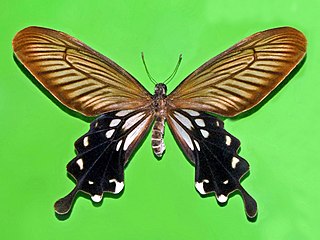
Losaria coon, the common clubtail, is a butterfly belonging to the swallowtail family, Papilionidae. The butterfly belongs to the clubtails, genus Losaria. It includes several subspecies and is found from the Nicobar Islands and Assam in India, east to Hainan in China, and south through Indochina, to Java and other islands of Indonesia and Bangladesh.

Graphium xenocles, the great zebra, is a swallowtail butterfly found in Southeast Asia which is common and not threatened.
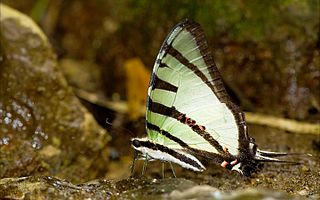
Graphium agetes, the fourbar swordtail, is a widespread species of swallowtail butterfly found in tropical Asia. It is common and not threatened.

Graphium mandarinus, the spectacle swordtail, which is native to India, is a butterfly of the swallowtail family (Papilionidae). It belongs to subgenus Pazala of the swordtails, that is, genus Graphium.

Graphium eurypylus, the great jay or pale green triangle, is a species of tropical butterfly belonging to the family Papilionidae.
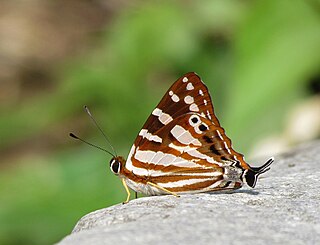
Dodona egeon, the orange Punch, is a small but striking butterfly found in the Indomalayan realm - in Mussoorie to Assam, Burma (nominate) and Peninsular Malaya that belongs to the family Riodinidae.
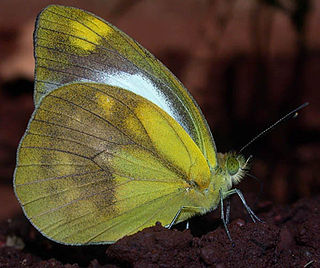
Cepora nadina, the lesser gull, is a small to medium-sized butterfly of the family Pieridae, that is, the yellows and whites. The species was first described by Hippolyte Lucas in 1852. It is native to Sri Lanka, India, Myanmar, Hainan, and southeast Asia.

Jamides celeno, the common cerulean, is a small butterfly found in Indomalayan realm belonging to the lycaenids or blues family. The species was first described by Pieter Cramer in 1775.

Curetis bulis, the bright sunbeam, is a species of butterfly belonging to the lycaenid family. It is found in Asia.
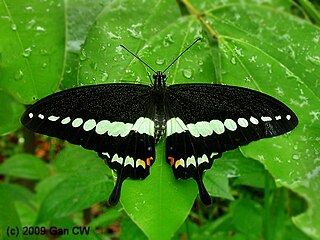
Papilio demolion, the banded swallowtail, is a species of swallowtail butterfly Belonging to the family Papilionidae.
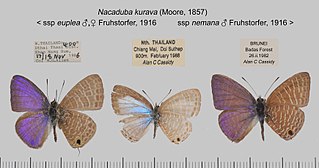
Nacaduba kurava, the transparent six-line blue, is a Lycaenidae butterfly found in Asia and Australia. The species was first described by Frederic Moore in 1857.

Cethosia nietneri, the Tamil lacewing, is a species of nymphalid butterfly found in Sri Lanka and south India. The species name is after John Nietner who obtained specimens of the butterfly from Ceylon from which it was described.

The Indian fritillary is a species of butterfly of the nymphalid or brush-footed family. It is usually found from south and southeast Asia to Australia.
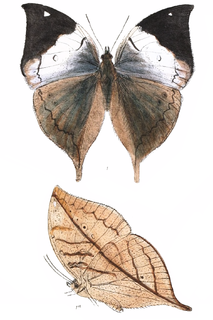
Kallima knyvetti, the scarce blue oakleaf, is a species of leaf mimic butterfly found in Southeast Asia.





















